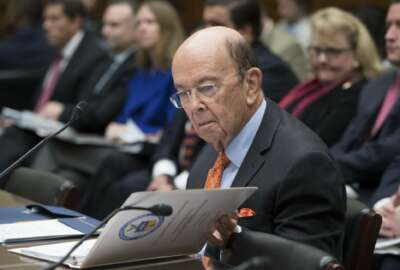

This year's program produced 12 new data tools.
Subscribe to Federal Drive’s daily audio interviews on iTunes or PodcastOne.
Can census data be cool?
The team behind the My City Data Learning Tool thinks so, and the way they’re doing it is through an online game that combines superheroes, census data and rescue missions.
Shubha Govil, product management director for Cisco, and the mind behind the tool, said she knew the way to educate was through entertainment. She tested the program on a team of young engineers — the game was a hit and she’s hoping the millennial audience the game appeals to will help spread the word about the importance of information like population counts, city infrastructure, and neighborhood layouts.
The My City Data Learning Tool is one of a dozen new products created under the Opportunity Project, a forum for combining public and private sector ideas to put government data to its best use.
“We can’t do it alone, we need the public-private partnerships that were demonstrated today,” said Kyla Fullenwider, chief innovation officer at the Census Bureau, during Wednesday’s Demo Day at the bureau’s headquarters in Suitland, Maryland. “These are critical for government to move into the 21st century, and not only can we not do it alone, we shouldn’t do it alone, because when we see what happens when we get groups like the teams that presented today to work on some of our toughest challenges, we realize that government actually works better when we engage citizens, when we engage the non-profit sector, when we engage businesses, and we can actually do our work better.”
The Opportunity Project launched in March 2016, and in October 2016, the Commerce Department announced it was spearheading the ongoing project. Now the Census Bureau, which is a component of the Commerce Department, is taking the reins.
Drew Zachary, director and co-founder of the Opportunity Project, said the project has three goals: people, data, and collaboration.
“The first is to obviously create digital tools or catalyze the creation of digital tools that promote positive outcomes for residents across the country,” Zachary said. “The second is that we really want to do a better job of stewarding our data. A lot of the federal agencies, but especially at the Census Bureau, we want to see our data better utilized by more people, transformed by technologists and developers into even more tools than we could ever create ourselves. And then also importantly, to get feedback from developers and data consumers to understand what is their experience using our data and how can we use that information to improve the way that we present the data to the public.”
The third goal is to create an easy path for collaboration across various sectors who are trying to solve the same problem,
“How can we make it super easy for us to get together and brainstorm and create things of value together,” Zachary said.
Some of the other products developed under this year’s Opportunity Project include a career exploration tool, a digital paper trail for homeless veterans seeking mental and physical health treatments, and an urban development tool that’s useful to both commuters and city planners.
Zachary said there is more diversity in the tools developed under this year’s program. The first year the tools trended more toward maps, while the second round began to show a range of solutions.
“There are so many new types of solutions each round, and that’s what’s so exciting is it opens our minds to when a technologist gets their hands on a problem,” Zachary said. “We point them in a direction and point them to data, they come up with a game like Cisco built, a game-ified app, or a field management system like the IBM team built. To me the trend is really increasing diversity of what types of solutions we’re seeing.”
Zachary said the Opportunity Project team knows the tools are successful when the end users give their stamp of approval.
“I think that’s really the best success for us,” Zachary said. “They’ve made awesome use of the data and that people are really going to be able to use [the tools].”
Internally the Census Bureau is also looking to be more innovative with its employee training courses. Fullenwider announced that starting next year Census is offering employees a user-centered methods and human-centered design certification program.
The program will bring best practices from the private sector to help Census employees “start designing and innovating from the bottom up,” Fullenwider said.
The first class starts in January and participants will receive their certification after one month.
Census also launched a new Opportunity Project Digital Toolkit that offers a guide to anyone who wants to conduct their own project sprint.
Copyright © 2025 Federal News Network. All rights reserved. This website is not intended for users located within the European Economic Area.


